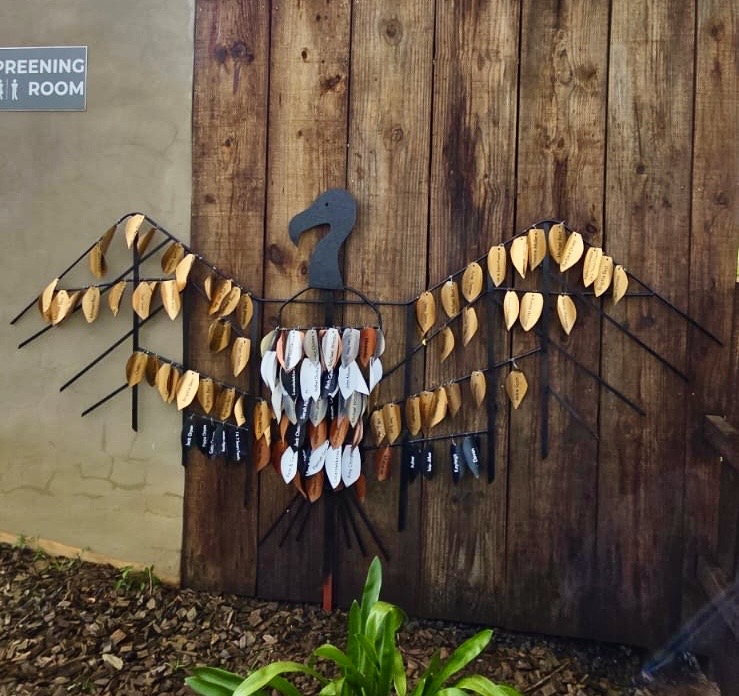For World Wildlife Day we are sharing some interesting facts about some of the animals that need our help most and explaining a bit why they are so important to Africa’s ecosystems.
AFRICAN WILD DOGS
The African Painted Dog is the most efficient predator on land with a hunting success rate of around 80%. This is impressive, especially when compared to that of the African Lion which is around 30%. After the Ethiopian Wolf, the African Painted Dog is the most endangered carnivore in Africa, with fewer than 550 remaining in South Africa. This is mostly due to human-wildlife conflict and snare hunting for bushmeat.

ELEPHANTS
The mighty Elephant is both the strongest and largest mammal on land and can weigh over 10 tons. The elephant brain is similar in structure to the human brain and is capable of expressing several emotions that we are familiar with, including empathy, grief, compassion, self-awareness, altruism and play. When an elephant calf is not feeding it might suck its trunk for comfort - just as a human baby would suck its thumb. If a baby elephant is distressed, often the entire family will rumble their support and move over to touch and comfort it. Behaviour suggests that Elephants also mourn their dead, often traveling great distances to sites where their loved ones died.

RHINO
Rhino are the second largest land mammal after the elephant - weighing in at around 2700kgs. Rhinos have been around for over 50 million years, but sadly 3 of the 5 remaining rhino species native to Africa and Asia are now critically endangered. The word “rhinoceros” means “nose horn”. These horns are made from a protein called keratin, which is the same substance that fingernails and hair are made of. Rhinos face a major threat of becoming extinct due to poaching.

CHEETAH
Cheetah are able to accelerate from 0 to 100 km/h in just 3 seconds and can reach speeds of 120km/h over short distances – making them the world’s fastest land mammal. Their tail acts like the rudder of a ship to counter balance its weight when changing direction and they have a “dew claw” which aids in hooking prey when running. Each cheetah paw has its own unique paw print – much like human fingerprints.

VULTURES
Vultures are masters of flight with incredible digestive systems - capable of digesting highly toxic substances such as botulism, cholera, anthrax and even rabies. A world without vultures would be a foul-smelling place filled with disease and rotting carcasses. A soaring vulture can spot a 3 foot animal carcass from 4 miles away. Vultures consume around 90% of dead ungulates in the southern African savanna.

LEOPARDS
Originally, leopards were thought to be hybrids of lions and panthers. Their common name derives from this belief; leo being the Greek and Latin word for Lion and pard - an old term meaning panther. Leopards are astoundingly strong. Pound for pound they are the strongest of the big cats and weigh between 40 - 90 kilograms. Their beautiful coats are covered in rosettes rather than spots like a cheetah.

HYENA
Hyenas have immensely powerful jaws and strong digestive juices which can break down every animal part other than hair. By consuming carcasses hyenas do a great job with helping to clean up the environment – preventing the spread of disease. Additionally, by breaking down bones hyenas recycle calcium back into the environment where it is accessible to other species. Hyenas are more closely related to cats than dogs.

LIONS
Lions are one of the most social cat species, sometimes living in prides of up to 15 males, lionesses and cubs. They roar to communicate with other each other – a sound which is one of the loudest in the animal kingdom and can be heard up to 8km away. When lions breed with tigers the resulting hybrids are known as ligers and tigons. There are also lion and leopard hybrids known as leopons, as well as lion and jaguar hybrids known as jaglions. These unnatural hybrids are often due to human interference

SEA TURTLES
Sea turtles have been swimming in the oceans for a very long time, much longer than humans have walked the earth. They have been around for the last 100 million years! These graceful sea creatures only nest every 2-4 years. To reach their nesting grounds, Hawksbill and Green Sea Turtles migrate long distances to reach the very same beaches where they were born. Anywhere between 60 and 200 eggs are laid at a time and the babies have a risky scramble back to the water once they hatch.

Happy World Wildlife Day! Let's work together to protect these special creatures






.jpg)


